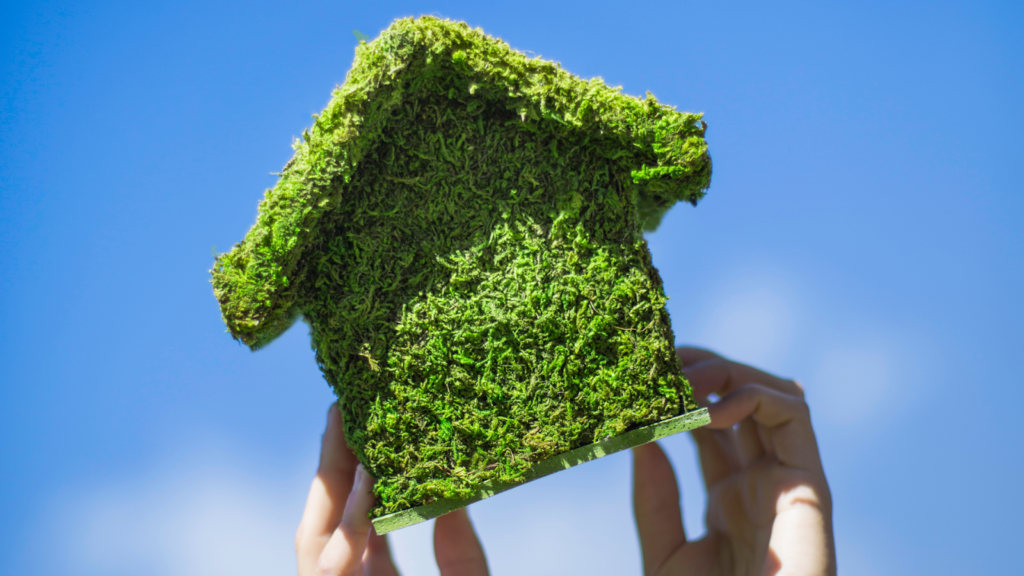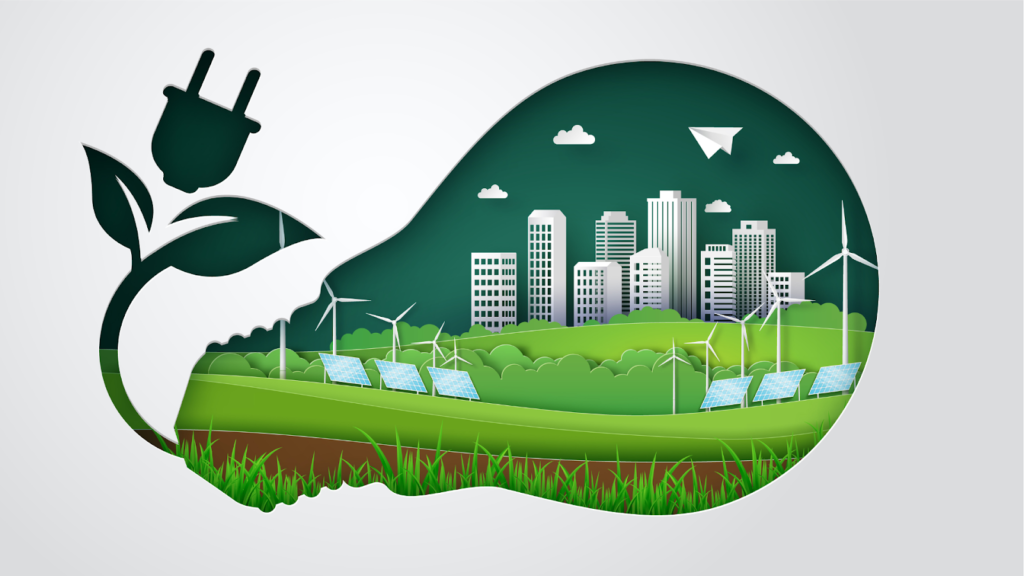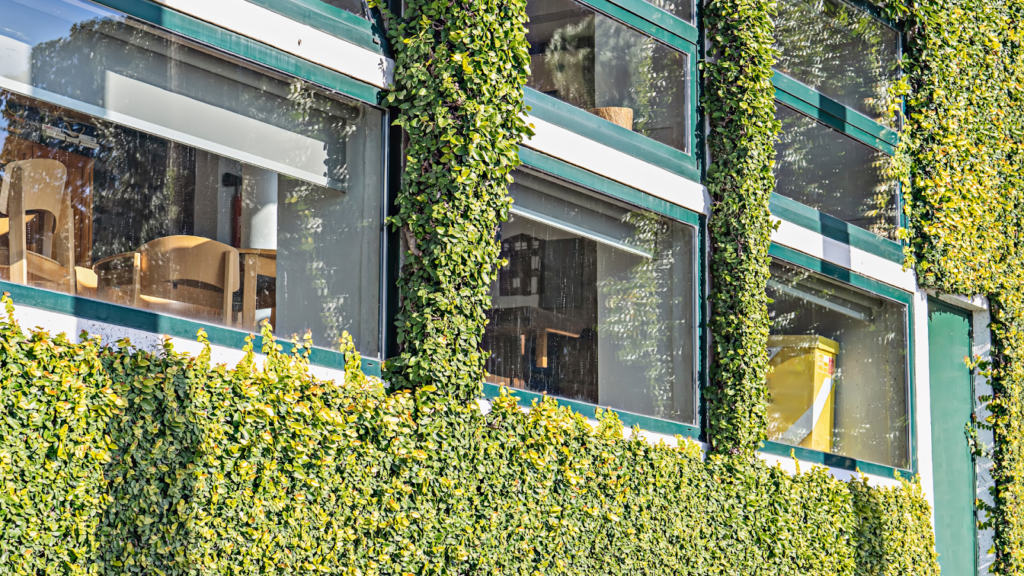Sustainable living is no longer just a buzzword in India—it’s a movement that’s reshaping industries, including real estate. As climate change and resource scarcity push us toward greener choices, the rise of green real estate is hard to ignore. Beyond the obvious environmental perks, investing in eco-friendly properties offers compelling financial rewards. In this blog, we’ll dive into why green real estate is not just good for the planet, but also a smart investment in India’s future.

1. Energy Efficiency and Reduced Utility Costs
One of the immediate financial perks of green real estate is the dramatic cut in utility costs. Green buildings in India are built with energy efficiency front and center, featuring:
- Solar Panels: With India’s plentiful sunlight, solar power is a cost-effective energy source that can significantly lower electricity bills.
- Energy-Efficient Appliances: Appliances with higher star ratings use less energy, making them a smart choice that’s widely available in the Indian market.
- LED Lighting: LED lights consume less electricity and last longer than traditional bulbs, reducing both energy use and replacement costs.
- Insulation and High-Performance Windows: These features help maintain a consistent indoor temperature, slashing heating and cooling expenses.
These energy-saving features translate into lower utility bills for residents and tenants. Over time, these reductions can add up, significantly enhancing the return on investment (ROI) for green real estate properties.

2. Higher Property Values and Marketability
Green real estate isn’t just good for the planet—it’s great for your wallet. These properties often command higher values than traditional buildings, and here’s why:
- Increased Demand: Urban areas like Bangalore, Mumbai, and Delhi are seeing a surge in demand for sustainable living. Buyers and tenants are willing to pay a premium for eco-friendly homes.
- Government Incentives: The Indian government sweetens the deal with tax deductions on loans for green buildings and subsidies for solar installations.
- Long-Term Savings: Lower operating and maintenance costs make green buildings more attractive to buyers and investors, driving up property values.
On top of that, green buildings are easier to market. With growing awareness and demand for sustainability, these properties have a clear edge in the competitive real estate market.
3. Tax Benefits and Incentive
Investing in green real estate in India doesn’t just save the environment—it can save you money, too. The government offers a variety of tax benefits to encourage sustainable building practices:
- Income Tax Deductions: You can deduct interest paid on loans for installing renewable energy systems.
- Subsidies: The Ministry of New and Renewable Energy (MNRE) provides subsidies for solar panels and other renewable energy installations.
- Incentives for Developers: Some state governments offer fast-track approvals and higher Floor Space Index (FSI) for constructing green buildings.
Many financial institutions offer favorable terms for green building projects. Green bonds and other sustainable investment vehicles also provide opportunities for investors to back environmentally responsible projects. These perks can significantly reduce your initial investment costs, making green real estate a financially smart choice.

4. Lower Operating and Maintenance Costs
Green buildings are built to last and cost less to maintain. Here’s how they save you money over time:
- Durable Materials: These buildings use materials that withstand wear and tear, cutting down on repair and replacement costs.
- Water Efficiency: Features like low-flow fixtures, rainwater harvesting, and water treatment plants reduce water use and lower bills.
- Improved Indoor Air Quality: Non-toxic materials and better ventilation lead to healthier indoor environments, reducing health-related costs for tenants.
Lower operating and maintenance costs mean a better return on investment (ROI) and make green real estate an attractive option.
5. Higher Occupancy Rates and Tenant Retention
Sustainability is a priority for many consumers. Green buildings appeal to environmentally conscious tenants, leading to higher occupancy rates and better retention:
- Tenants are more likely to renew leases in buildings that offer lower utility costs, healthier environments, and a commitment to sustainability.
- This translates to fewer vacancies, reduced turnover costs, and a more stable income stream for property owners.

6. Resilience to Regulatory Changes
The Indian government is increasingly focusing on environmental regulations. Investing in green real estate ensures that your properties comply with current and future standards. Traditional buildings may face costly upgrades to meet new regulations, while green buildings are usually designed to exceed these standards. This regulatory resilience saves you money in the long run and protects your property values.
7. Long-Term Asset Value
Green buildings are designed with the future in mind, making them valuable assets over the long haul. As demand for sustainable living and working spaces grows, green properties are likely to appreciate faster than traditional buildings. This long-term asset value makes green real estate a sound choice for building wealth and ensuring financial stability.

Investing in green real estate is more than just an eco-friendly choice—it’s a financial powerhouse. With slashed utility bills, higher property values, and attractive tax incentives, green properties are a goldmine in today’s market. Plus, as India embraces sustainability, the demand for eco-conscious living is skyrocketing, making these investments more profitable than ever. In a world that’s going green, smart investors are cashing in!


